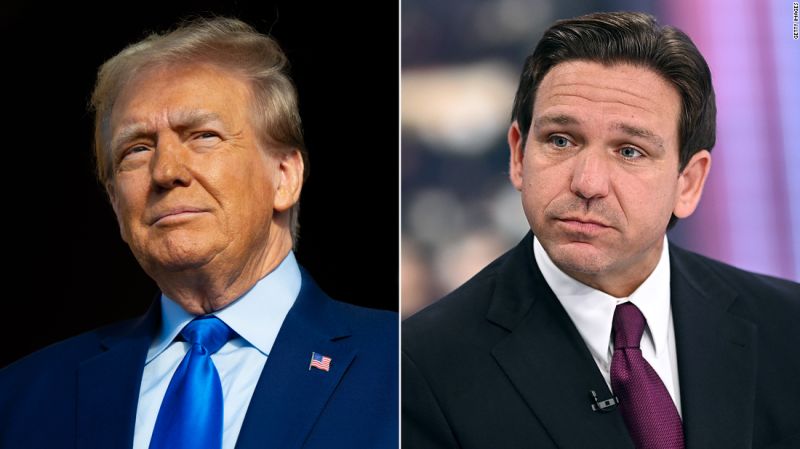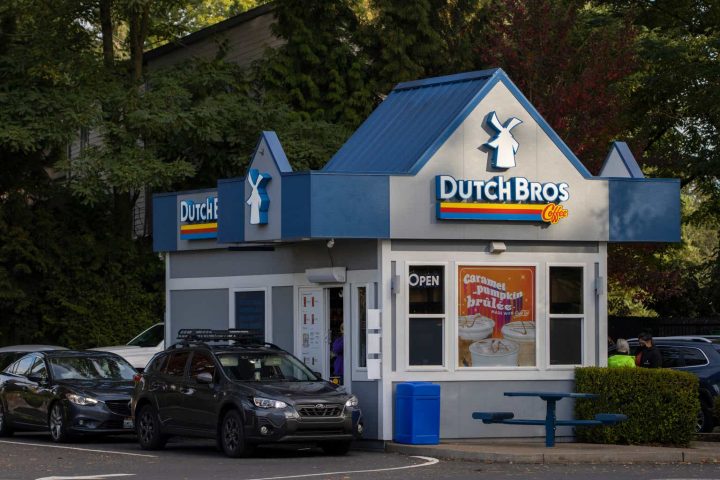LiveOne, Inc. (NASDAQ:LVO) Special Slacker Webcast Conference Call November 1, 2023 10:30 AM ET
Company Participants
Aaron Sullivan – Chief Financial Officer
Rob Ellin – Chief Executive Officer and Chairman
Bradley Konkol – Head, Slacker
Conference Call Participants
Brian Kinstlinger – Alliance Global Partners
Jon Hickman – Ladenburg Thalmann
Calvin Hori – Hori Capital
Operator
Hello and welcome to today’s LiveOne’s Special Slacker Webcast and Conference Call. My name is Bailey and I will be your moderator for today. [Operator Instructions] I’d now like to pass the conference over to Aaron Sullivan, Chief Financial Officer of LiveOne. Please go ahead.
Aaron Sullivan
Thank you. Good morning and welcome to LiveOne business update regarding Slacker Inc., our wholly owned subsidiary. Presenting on today’s call with me today is Rob Ellin, CEO and Chairman of LiveOne; and Bradley Konkol, Head of Slacker.
I would like to remind you that some of the statements made on today’s call are forward-looking and are based on current expectations, forecasts and assumptions that involve various risks and uncertainties. These statements include, but are not limited to, statements regarding the future performance of the company, including expected future financial results and expected future growth in the business. Actual results may differ materially from those discussed on this call for a variety of reasons. Please refer to the company’s filings with the SEC for information about factors, which could cause the company’s actual results to differ materially from those forward-looking statements, including those described in its annual report on Form 10-K for the year ended March 31, 2023, and subsequent SEC filings.
You’ll find reconciliations of non-GAAP financial measures to the most comparable GAAP financial measures discussed today in the company’s call, which is posted on its Investor Relations website. The company encourages you to periodically visit Investor Relations website for important content. Following discussions, including responses to your questions, contains time-sensitive information and reflects management’s views as of the date of this call, November 1, 2023. And except as required by law, the company does not undertake any obligation to update or revise this information after the date of the call.
I’d like to highlight to investors that this call is being recorded. The company is making it available to investors and media via webcast, and a replay will be available on its website in the Investor Relations section shortly following the conclusion of the call. Additionally, it is the property of the company and any redistribution, transmission or rebroadcast of this call or webcast in any form without the company’s written expressed content is strictly prohibited.
Now I would like to turn the call over to LiveOne CEO, Rob Ellin.
Rob Ellin
Thank you, Aaron. LiveOne has made a determination that based on market conditions for SPACs and overall market conditions and most importantly, the exceptional performance of Slacker’s management and numbers. We believe that the company is worth way more than the $160 million that the company was valued at 6 months ago by ROTH Capital. This allows us now with our bankers at JPMorgan to explore all options.
There is an opportunity today to roll up multiple other companies in the space. We have 4 to 5 potential acquisitions in the audio business alone, that would fit in very nicely with the company and be extraordinarily accretive to revenues and bottom line. We also could explore a sale or a strategic investor, including some of our current customers or investors. We also will explore a direct IPO as the markets change and fair market value for the numbers that we’ve delivered are available. We also can just today focus all of our energy on the terrific numbers we announced this week, focus all the energy on B2B partnerships that we’ll talk about shortly. And then we can now use our capital to continue aggressively buying back stock at this low market cap.
Today, LiveOne is trading at a $90 million valuation with just Slacker Radio reporting alone, Slacker – we acquired the company in 2008, receiving $20 million in revenues, $7 million in losses, had $47 million of short-term payables and 400,000 subscribers that we were losing 25,000 subscribers a month at time of growth. We now have hockey stick growth across all of those. We now have 3.3 million subscribers. We are growing about 60,000 a month. We’ve just put out our numbers for the first time ever in Slacker and delivered $31 million in revenues and $9 million in EBITDA for the quarter – I’m sorry, for the 6 months. And we’ve just put out guidance of $65 million and $17 million to $19 million of EBITDA for this year. And we stated that we are going to hit over 800,000 new subscribers this year. The Management and Board are pounding the table on the buyback, we bought over 3.7 million shares to date. We will continue to buy aggressively and we’ve just raised our buyback to $8.5 million, leaving almost $5 million of additional buying available.
With our balance sheet cleaned up, we are now expanding our sales team dramatically and focusing our energy on B2B partnerships with over 25 blue-chip customers in the pipeline and 5 plus super accretive acquisitions in the pipeline.
With that, I want to hand it off to Brad Konkol, who heads up Slacker Radio, and he’s just done an amazing job of turning this business and building the business, and he’ll talk through some of the opportunities in that pipeline. Thank you, Brad.
Bradley Konkol
Thank you, Rob, and thanks, everyone, for being here today. As Rob stated, we continue to see excellent member growth, particularly with our paid members in large part due to our business-to-business focus. In addition, we continue to see record low churn amongst our B2C members. We’re in an industry that’s expected to see 150% paid member growth by the year 2030. So there’s an amazing abundance of opportunity on the horizon.
We see bright signs that business-to-business is the most efficient, the most cost-effective means to continuing our growth by offering our music services in our first-in-class bespoke programming capabilities to our partners, which in turn will drive continued growth. It should also be stated that from a technical standpoint, we continue to invest in IP that allows us to quickly onboard partners and to support these custom bespoke music experiences for them.
To double down on the B2B focus, we recently hired Bill Wittress as our SVP, Head of Business Development, who’s had an impressive storied career across media, technology, fintech, you name it. We’re going to be adding to that roster with the consultants shortly as well and possibly more to come.
In the time that Bill’s been here, we’ve refocused on our pipeline, and we’ve established 5 key verticals or pipeline categories for partnership growth. These are automotive, carriers or telecommunications, retail/member services, consumer electronics and transportation, which is different from automotive and that transportation is more like airlines, buses, things where people are traveling in bulk as opposed to something that you might own personally.
Currently, we have 25 blue-chip partners in our business-to-business pipeline across these 5 verticals that we are actively engaged with. We believe there is a perfect overlap with these categories. And frankly, what we do best is a music service, which, again, I said it several times, but bespoke programming, personal storytelling in between the music. This allows our partner brands to make a personal connection with their customers.
Lean Back listening which is key to the experience in automotive transportation pricing flexibility and platform flexibility. For many, many years, and it goes back to the roots of Slacker Radio, we have been developing our technology and our IT so that it not only serves us, but it serves our partners. We’re extremely confident in our ability to continue growing our pipeline and closing deals by leaning into the aforementioned differentiators in addition by exploring expansion of our licensing outside of North America.
So again, we’re extremely confident in this approach. We’ve grown our pipeline by over 50% in the last several months by doubling down on the business-to-business focus. And we think we’ll be able to continue growing that and continue to drive our paid membership growth as a result.
And with that, Rob, back to you.
Rob Ellin
Yes. Thanks, Brad, and great job. What I would add to that is, is now that we have cleaned up our balance sheet, we’ve now put ourselves in a position to expand our licenses overseas. As most people know, subscription businesses, 50% of them use in the U.S. and 50% overseas seems right today, even though a third of our traffic is global. All of our revenues are from North America. There’s a huge opportunity to expand it. We’re also – as we look at next generation and any of you who have been participants in my stock over the years, right, we always look at technology and where it’s heading to. There’s a gigantic opportunity right now and self-driving cost. In the next 6 months to 2 years, there’s going to be a massive opportunity to grow that.
And with our partnership with Tesla, they are the top leader in it. I believe that Ubers and Lyfts and rental cars will be added to that. So if we just grew the 800,000 that we did this year, which we expect way higher next year at 800,000 additional subscribers at the same growth rate. That’s not including any B2B deals of the 25 today in the pipeline and growing. You’re looking at next year, you’re looking at revenues that again are going to grow 25% to 30% to over $85 million and would be well over – if you took the exact same number, well over $23 million of EBITDA.
We think Slacker is extremely undervalued. Next – in the next week or so, we’ll be reporting our overall numbers. We’ve just talked about our podcast numbers as well. And I think the company is undervalued and you’ll see us buying substantial amount of stock in the open market shortly.
With that, I’d like to open up to any questions and Q&A anyone would have.
Question-and-Answer Session
Operator
Thank you. [Operator Instructions] Our first question today comes from the line of Raana Khan from Joseph Stone. Please go ahead. Your line is now open.
Unidentified Analyst
Hi. Just following up, it seems like things are going as planned and all – when you hear these things, this sounds extremely exciting, but somehow it doesn’t translate into the stock. So what are we missing? I will not communicate in the right way – so just, where is the gap?
Rob Ellin
Yes, it’s a great question. And I’ve been doing this for a long time, right? So this is – I am a 30-year veteran, right, running public companies and building public companies, as you know. And what I would say to you is this is an extraordinarily difficult market, no excuses, right? We have to do a better job and we’re out there trying. And I think that’s anecdotically about the public markets and the micro caps. Right now, this is the largest curve in 40 years between large caps and micro caps. It’s got to change. Right? And when that change comes, it’s going to change in a very fast way. And the stock is – it was $2.16 only 6 weeks ago. It had a – has had amazing runs. We probably had 15 amazing runs with the stock traded in the $5 to $10 on a regular basis with big volume. We have to get that mojo back. So that’s been part of the reason for this call today. It’s part of the reason the earnings call next week, we’ll highlight the other overall business. This is the first time we’ve ever broken down Slacker numbers, so that people could just look at these numbers and just take just the numbers on this space alone, right? We did it in PodcastOne stock has doubled up over the last couple of weeks after we reported the numbers, right? As you see these Slacker numbers, they’re pretty staggering, right, from $20 million, right, into $65 million, right, in 5 years and taking those numbers from losing $7 million to making $17 million to $19 million. That’s a gigantic swing. This is what we do right? It’s what the management is focused on. The biggest way we’re going to win is by delivering revenues and bottom line. We’re going to be in the forefront of technology, as always. We’re going to be aggressively out there, right, articulating our story. And we’re going to have another run in the very near future.
Unidentified Analyst
Thank you.
Operator
Thank you. The next question today comes from the line of Richard Boyd from – please go ahead. Your line is now open.
Unidentified Analyst
Yes. Hi, good morning. My question is, will the auditor Macias Gini & O’Connell, will they update their engine about LiveOne based on the new numbers that are coming out?
Rob Ellin
Not following the question.
Unidentified Analyst
Well, when you google LiveOne auditors, there is a couple of paragraphs talking about LiveOne’s debt and the auditors doubt about LiveOne as a growing concern. And it seems to me that, that needs to be if, in fact, that is inaccurate today, it would be a good idea to update that paragraph on the internet.
Rob Ellin
Well, to start with auditors, don’t change opinions middle of the year, but we don’t have any debt anymore, right? So $21 million of debt converted at $2.10, right, in February. So there’s no debt left on the company. So we can’t give you any forward-information or what the auditors would tell you not. What I could tell you is that all of the debt converted to equity.
Unidentified Analyst
Okay. I just wanted to mention that to you.
Rob Ellin
No, appreciate it. And again, just to highlight that, conversion to $2.10 is double the market price today. And this is a pretty sophisticated investor, Jeff Osher at No Street, veterans has been a partner of mine for 20 years, invested in my deals for many years and converted at double the market price. So I think that’s a telltale sign about the company buying back stock and your top investor – one of your top two shareholders converting at $2.10. So there is no debt left in the business.
Unidentified Analyst
Okay. Well, then that investor owns 10 million shares, something like that?
Rob Ellin
No, no. it’s conversion of $2 is – it’s $15 million converted to $2.10.
Unidentified Analyst
Okay. Well, thank you.
Operator
Thank you. The next question today comes from the line of Brian Kinstlinger from Alliance Global Partners. Please go ahead. You line is now open.
Brian Kinstlinger
Great. Thanks for taking my questions. Just one, we have a trend where subscriber services – sorry, revenue from Slacker is growing at about 12% lower than subscriber growth. Can you just go through that dynamic, we’ve been seeing that for a couple of quarters now?
Rob Ellin
I’m sorry, can you say it one more time, Brian.
Brian Kinstlinger
Yes. You have the revenue growth is somewhere around 29%, plus or minus for Slacker, I believe, year-over-year. The subscriber growth, paid subscriber growth is about 40% year-over-year. So the subscribers are growing faster, and we’ve seen that trend for a couple of quarters. Can you just help explain what’s going on there? And will that continue? Or do you think subscriber growth and revenue growth from Slacker will eventually mirror each other?
Rob Ellin
Aaron, do you want to take that?
Aaron Sullivan
Yes. Thanks, Rob. Hi, Brian, yes, that’s primarily as a result of our disputed subs, which we kind of disclosed in all of our materials. And so the rate of revenue growth is just of the actual sub-growth is, but that’s the reason for it. Going forward, in the near-term, I would expect it to continue midterm, it would probably tail off a little bit and than long-term, we would hope to kind of have that mirror each other exactly. But that’s in the near-term, and that would be kind of for the rest of the fiscal year and into next year, we expect there to be a divergence between sub-growth and revenue growth kind of consistent with what you’ve seen over the last couple of quarters.
Brian Kinstlinger
So if I understand, are you saying the subscribers that are in question are actually in the premium subscriber number, but not in the revenue number? Just help me understand what you’re saying. I’m a little bit confused.
Aaron Sullivan
Correct. Yes. We don’t recognize revenue related to those subscribers that are in dispute, but they do contribute to our subscriber count.
Brian Kinstlinger
Do they – they weren’t – that was the same as last year, right, in 2Q?
Aaron Sullivan
Correct, there’s been no change for the last several…
Rob Ellin
And let me just help you there, Brian. I mean, this is not something we have a choice on. It’s the way we have to report it, right, from audit standpoint. So it’s not something that we can change yet, but I think we will see, as Aaron said, that will start to tail out. And obviously, that is all fully disclosed in the audits.
Brian Kinstlinger
Okay, thank you.
Operator
Thank you. [Operator Instructions] Our next question today comes from the line of Jon Hickman, Ladenburg Thalmann. Please go ahead. Your line is now open.
Jon Hickman
Hey, Rob, could you attach any names to the 25 deals that are in the pipeline?
Rob Ellin
Yes. We can’t because a lot of these are either under NDA. So actually giving the names – but what I could tell you is these are blue-chip billion dollar-plus companies, right, that fit exactly in the realm of what Slacker has done for 20 years, right? Remember, Slacker is partners with Verizon, T-Mobile, AOL over the years. They’ve been partners with pretty much Samsung, right? They crossed over hardware companies, right, own companies, carriers, the likes of – when you think about retailers, anyone that competes with Amazon online is going to need content. And then you’ve seen so many of our partners that we’ve had over the years, Jon, right? From the levels of Facebook down, there’s going to be people that need a music service. And again, as Brad articulated, we have three distinct advantages. Guide number one is our pricing. We are the Walmart of the space, right? We’re one-third of the price of Spotify, Apple and Amazon, they’re all raising their prices, right?
Number two is service. Because we’re small, we’re able to be nimble and uniquely be able to do things that no one else is going to be able to do for these companies because they’re just too big. And number three is we’re able to white label, right? So like we do with Tesla, right, we are Tesla radio, right? It doesn’t have to be Slacker Radio. We had Tesla radio. And it just again shows how Elon is so much smarter than any other car company and that he gets to talk to his customers every day as the cool kid in school who’s playing the music from. And so I think you’re going to see a lot of those B2B partnerships. And as Brad articulated, the new gentleman that we brought onboard at a Microsoft and Real Networks has done these deals over and over again, and he is a perfect complement to us. And I think you’ll see us add more and more B2B sales people to this team over the very, very short window.
Bradley Konkol
Yes. And just add to that, Rob. Jon, two deals that we can speak about, which have closed and which are close to launch is with OTT Studio. They’ve had a successful cord-cutting app called Free Movies Plus. They’re repeating that with music, and we’re powering the audio in that application that was submitted to Roku last week and expect it to go live any day now. That’s been in work for several months now. After Roku, they’re going to launch it – fire devices and then LG Smart TVs after that. We also closed another deal earlier in the year with a company called Telly, cofounded by Ilya former Pluto founder. And that is a very unique partnership in that they are giving away TVs that have multiscreen TVs. And the business model there is that there’s a screen that’s always on that’s advertising.
There’s over 400,000 customers that are already in queue to get one of these free TVs. They just recently launched their beta program, which is expected to continue for the next couple of months. But starting in the first quarter of next year, we expect that to very quickly ramp up to the 400,000 or beyond mark, wherever they are at that point. We are the default music experience in those TV devices. So we’re really excited about that opportunity as well. So just a couple to give you an idea.
Jon Hickman
Okay, thanks.
Operator
[Operator Instructions]. The next question comes from Calvin Hori from Hori Capital. Please go ahead. Your line is now open.
Calvin Hori
Hi, Rob, now that the Slacker deal with the ROTH SPAC has expired, are you going to explore other avenues to kind of get the valuation that you deserve for Slacker through IPO spin-off or whatever?
Rob Ellin
Yes. And I think I answered that before, but just to repeat it and highlight it, right? We already had the S-4 done right? We’ve already done all the work on it. So it’s very likely that we will have a registrations taking place that if we see market conditions for IPOs changing, right, especially with the massive growth now in – we’re talking about very different numbers, right? We signed that deal, I think it was 7, 8 months ago, it feels like a lifetime ago, right? We signed that deal, right, the business was a way smaller business and with less EBITDA, right? So we’ve gone from $8 million to, call it, $17 million to $19 million of EBITDA. But we’re going to be talking about next year’s numbers very shortly, right? Because we’re a March 31st year-end, so most likely, we will move with a S-1 and be prepared, right, if the market does change and the dynamics change.
Number two is we hired JPMorgan going back and JPMorgan was with their – to start with, they were there on the offensive side for us to continue to buy companies because we’ve acquired eight companies, right? We keep growing it. We then revitalize that and talked about on a defensive basis, right? That was when the stock was $4, right, that we’re a strong candidate that everybody in the industry, including some of our partners, they try to buy us. And we want to make sure that as a fiduciary, we protect each of the subsidiaries as well as the whole company, right, and we protect the fiduciary that we get maximum value on that. So we’re – definitely, we’re going to have to be prepared to that.
Number three is we’re going to continue to roll up assets. And what’s happened right now in the audio business is our competitors who are not the Spotifys and the Apples are just decimated. They’ve never figured out how to make money because they’re all focused on B2C. We don’t spend any money on B2C. I owned Kayzo years ago. They’re more members intrinsic. We had a great run, but we lost so much money, right, trying to acquire customers that $80 a sub with 30% breakage is just an impossible model. And you can see it by Spotify how they struggle make money, and they’ve raised tens and tens of billions of dollars to get there. For us now, we’re so confident in the B2B side of it and where the direction when it’s going.
When you think about spending money on B2C, there are some great small companies that we can add in and tuck-in acquisitions that we’ve proven we now had to turnaround. We’ve proven we know how to make them work, and we’ve proven we know how to get them to cash flow. $80 a sub times 800,000 subscribers means that anybody else is spending $65 million acquiring those a year. We spent no money marketing. So we’re going to continue those B2B deals and keep focusing on those B2B deals.
Calvin Hori
Okay, thank you.
Operator
Thank you. There are no additional questions waiting at this time. So I’d like to pass the call back over to Rob Ellin for any closing remarks.
Rob Ellin
I just want to thank everyone. Thank everyone for spending the time, and we look forward to our quarter end call next week or the week after, obviously before the 15th. And we’re really excited about the overall numbers and each of the subsidiaries of the company are now tracking. We’ve got almost every division profitable. We still got a little bit work to do on our merchandise business. Our podcast business is really growing terrifically. It looks like it’s on the same trajectory as Slacker. As you put those together, you got an amazing audio business, that we said this year is going to do between $105 million and $110 million. And so I’m really excited about where we’re going. And again, we’ll get to pound the table and be a buyer of the stock and continue to buy back stock and show our confidence in the company and show our confidence. And I’m proud of my management team and I thank everybody for spending their time today.
Operator
This concludes today’s conference call. Thank you all for your participation. You may now disconnect your lines.
Read the full article here







